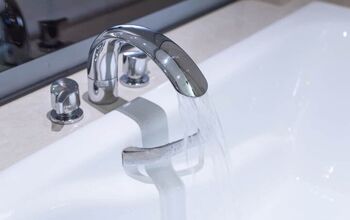Does The Landlord Have To Replace The Bathtub? (Find Out Now!)

If you have rented or leased a residence long enough, then you have likely encountered the question of tenant versus landlord responsibility. When does the landlord have the obligation to fix and repair items? These questions can include items, such as doors and windows to appliances and household fixtures. Another common area in question is the bathroom, and does the landlord have to replace the bathtub?
The law, in most circumstances, requires the landlord to replace the bathtub. Landlords are obligated to maintain an inhabitable place of residence. Tenants are required to inform the landlord of the problem. Using certified mail is advised and is recognized by the law as evidence of notification. Additionally, tenants have options if the landlord is not making the necessary repairs or replacements.
The crux of the issue and at the heart of the question is what defines a bathtub as uninhabitable. Here is also where the matter can get gray. As a rule of thumb, if a bathtub doesn’t pose a clear risk to our health, then being dirty or stained likely won’t warrant a replacement bathtub. When the bathtub doesn’t hold water of the faucet isn’t working, it renders a bathtub unusable.
Do You Need Bathtub Installation or Replacement?
Get free, zero-commitment quotes from pro contractors near you.

What to do When Landlord Doesn’t Fix Problems
That is also the type of situation that would require the landlord to replace the bathtub. What happens, however, when a landlord neglects their legal obligations and responsibilities? What recourse does the tenant have? Fortunately, tenants have a few good options to resolve this issue. Step one though is upholding their end of the deal.
Tenant Obligations
While the onus of replacing a bathtub falls squarely on the shoulders of the landlord, the tenant does have a role. First and foremost, the landlord can only be held responsible for repairs they know about. In other words, the tenant can’t put rent funds in escrow (we will discuss that momentarily) without giving the landlord ample opportunity to fix the problem.
That simply means the tenant needs to inform the landlord of the issue. In the court of law, the most recognized form of notification in these cases is certified mail. That is why tenants should notify landlords via this method. Certified mail also establishes a verifiable timeline, an essential element of the problem.
Tenants can take action if the landlord is properly notified and a verifiable method of contact is used. If following these channels goes without response or resolution from the landlord, tenants have a few options.
Deduct Repairs/Replacement from Rent
Many states support the repairs deduction from the rent check remedy. After making efforts to call the landlord and following the steps of using certified mail, repairs can generally be done by the tenant. In the case of replacing the bathtub, the process is a relatively simple one.
Step 1: Find replacement and remove the old bathtub
Ideally, the tenant will want to locate a bathtub of comparable style and size. Once the right bathtub has been found, remove the existing bathtub. If any expenses are incurred during the bathtub removal (paying someone to haul, etc.) make and keep receipts for these services.
Step 2: Buy and install new bathtub
Once again, it is vital to keep the receipts for any extra parts or attachments, in addition to the cost of the new bathtub. Once the new bathtub has been purchased and installed, it is time to make the deductions.
Step 3: Making payment minus deductions
Simply attach all the receipts to the rent check after they are totaled. Then, subtract the total from the amount of the rent and make the payment for the balance. A letter can also help to explain the payment and breakdown.
Using the Escrow Option
Tenants who consider the option of putting rent funds in escrow also need to ensure they have i’s dotted and their t’s crossed. That means that tenants should meet the following criteria before filing for escrow:
- Good rental history and current on rental payments
- Verification of written notice of the problem to the landlord
- Problem(s) must still be unresolved
If tenants meet these conditions, they have the option to file an escrow form with the courts (e.g., clerk of courts, common pleas, etc.). Tenants will then begin making rent payments to the courts. The courts hold these funds until the landlord makes and proves the resolution of the issues.
Legal Right to Leave
In many states, after efforts made to get problems fixed go unanswered, tenants have a legal right to vacate the premise without recourse. Although this is never an ideal solution or desired resolution, sometimes desperate means call for desperate measures.
In most cases, whenever the residence is deemed to be uninhabitable, it violates landlord-tenant law. On that premise, courts historically favor tenant claims. Like it is with any decision involving the legalities of the tenant-landlord relationship, learning the laws that govern your state is a good idea. It is also worth noting here that the rental contract is a good place to find valuable information regarding many tenant-landlord situations.
If the problem, however, is the need for a working bathtub, the headache may not be worth the effort. And simply buying a new bathtub could save considerable grief, time, and discomfort.
Do You Need Bathtub Installation or Replacement?
Get free, zero-commitment quotes from pro contractors near you.

How Much do Bathtubs Cost?
The cost of a new bathtub can cost as little as $200 and well over $1000 for the most elaborate types of bathtubs. With the relative affordability of bathtubs today, it is also easier to justify remedying the problem ourselves. Many variables go into the cost of bathtubs, such as size and material. 30″W x 60″ L fiberglass-based bathtubs rank among the most common and affordable.
If a landlord is unresponsive, slow to respond, or simply refuses to help, this might be about more than the need for a bathtub too. The good news is that tenants have options and can protect their rights following the right processes and steps.
Related Guides

We are a team of passionate homeowners, home improvement pros, and DIY enthusiasts who enjoy sharing home improvement, housekeeping, decorating, and more with other homeowners! Whether you're looking for a step-by-step guide on fixing an appliance or the cost of installing a fence, we've here to help.
More by Upgraded Home Team

















![Standard Dining Room Table Dimensions [for 4, 6, 8, 10 and 12 People]](https://cdn-fastly.upgradedhome.com/media/2023/07/31/9074335/standard-dining-room-table-dimensions-for-4-6-8-10-and-12-people.jpg?size=350x220)









